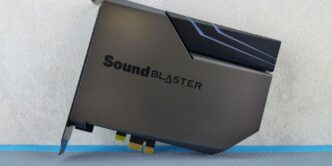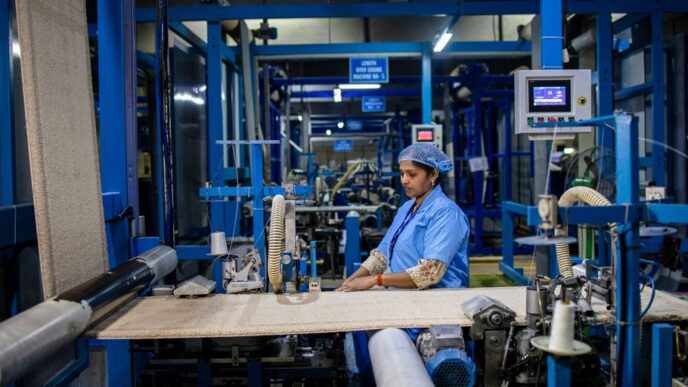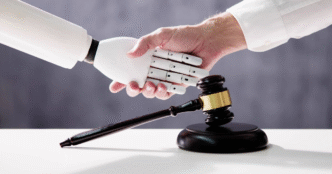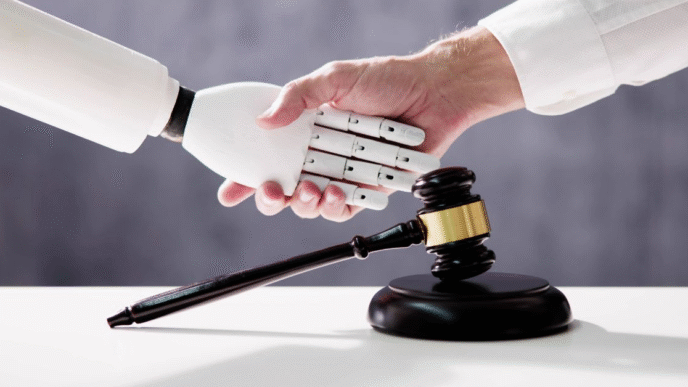Introduction
Maintaining academic integrity is of paramount importance in the world of education and research. However, with the ever-increasing availability of online resources, plagiarizing has become a major concern. In order to uphold originality and ensure the authenticity of academic work, the role of technology, particularly AI plagiarism checkers, is becoming increasingly significant. These advanced tools, such as plagiarism checkers, text summarizers, and content rewriters, play a crucial role in detecting and preventing plagiarism. By incorporating these innovative solutions into academic institutions, we can enhance academic integrity and foster a culture of originality. In this article, we will explore the role of AI plagiarism checkers in upholding academic integrity and promoting originality.
Academic integrity serves as the foundation of a fair and credible education system. It encompasses a set of ethical values and principles that every student and researcher should uphold. Academic institutions have a responsibility to create an environment that promotes integrity, honesty, and originality. By maintaining high standards of academic integrity, we ensure that knowledge is built upon reliable and authentic sources, and that credit is given where it is due.
Plagiarism, the act of using someone else’s ideas or work without proper acknowledgment, undermines the principles of academic integrity. It not only compromises the credibility of the individual involved but also erodes the trust and respect within the academic community. It is crucial to address this issue and take proactive measures to prevent plagiarism.
AI plagiarism checkers are invaluable tools in this regard. These sophisticated programs use advanced algorithms to compare submitted work against an extensive database of sources, both online and offline, to identify potential instances of plagiarism. By highlighting potentially plagiarized content, these tools empower educators and institutions to take necessary actions to maintain academic integrity.
The prevalence of plagiarism in academia
Plagiarism is a widespread issue in academia, affecting students and researchers at all levels of education. Studies have shown that a significant percentage of papers submitted for academic evaluation contain instances of plagiarism, whether intentional or unintentional. This trend has raised concerns about the erosion of academic integrity and the need for effective measures to address this issue.
One reason for the prevalence of plagiarism is the ease with which information can be accessed online. With the vast number of resources available at their fingertips, students may unknowingly rely too heavily on these sources and fail to properly attribute the information they use. Additionally, the pressure to perform well academically and meet deadlines can tempt individuals to take shortcuts and present others’ work as their own.
The consequences of plagiarism can be severe, ranging from academic penalties, such as failing a course or being expelled from an institution, to professional and legal repercussions. Institutions have a responsibility to educate students about the importance of academic integrity and provide resources to help them navigate the complexities of proper citation and referencing.
Introducing AI plagiarism checkers
In recent years, the advancement of technology has opened up new avenues in the fight against plagiarism. AI plagiarism checkers have emerged as powerful tools that can help educators and institutions uphold academic integrity. Leveraging natural language processing and machine learning algorithms, these software solutions are designed to analyze academic papers, essays, and other written works for instances of plagiarism.
AI plagiarism checkers work by comparing the submitted work to an extensive database of sources, including websites, scholarly journals, and academic publications. They can detect similarities in sentence structure, wording, and even specific phrases, allowing for the identification of potential cases of plagiarism. By flagging suspicious passages and providing a detailed report, AI plagiarism checkers enable educators to examine the context and make informed decisions about the originality of the work.
These tools are not only efficient in detecting outright plagiarism but also in identifying unintentional instances of inadequate citation or paraphrasing. They provide students with an opportunity to learn from their mistakes and develop important skills in academic writing and research.
How AI plagiarism checkers work
AI plagiarism checkers utilize sophisticated algorithms and natural language processing to detect instances of plagiarism in academic papers and other written works. These tools have a multi-step process that ensures a thorough analysis of the submitted work.
First, the AI plagiarism checker compares the text to a vast database of sources, including websites, scholarly journals, and publications. It examines the sentence structure, wording, and specific phrases to identify similarities or matches.
Next, the tool generates a detailed report that highlights any potential cases of plagiarism. It provides educators with a side-by-side comparison of the submitted work and the identified sources, making it easier to assess the level of similarity and determine the originality of the content.
Some AI plagiarism checkers even offer advanced features like citation analysis, which helps identify inadequate or incorrect citations. This allows students to learn from their mistakes and improve their research and writing skills.
By leveraging AI technology, these plagiarism checkers provide an objective evaluation, reducing biases and ensuring fair treatment for all students. They save educators precious time by automating the plagiarism detection process, allowing more focus on providing valuable feedback and guidance to students.
Benefits of using AI plagiarism checkers in upholding originality
AI plagiarism checkers offer numerous benefits to academic institutions in their efforts to promote academic integrity and uphold originality. Let’s delve into some of the advantages of utilizing these advanced tools.
Firstly, AI plagiarism checkers provide a comprehensive and efficient analysis of students’ work, ensuring a thorough examination of potential instances of plagiarism. By comparing the submitted content with a vast database of sources, these tools can identify even the subtlest similarities, helping both educators and students address any unintentional plagiarism.
Secondly, these tools promote learning and improvement. With advanced features like citation analysis, students can gain insights into their citation practices, enabling them to enhance their research and writing skills. By identifying inadequate or incorrect citations, AI plagiarism checkers play a vital role in guiding students towards proper academic practices and responsible use of sources.
Additionally, these tools promote academic fairness and reduce biases. AI plagiarism checkers offer an objective evaluation of students’ work, preventing any subjective judgment or potential favoritism. This ensures that every student is treated fairly and equitably, regardless of personal relationships or biases.
Addressing concerns and limitations of AI plagiarism checkers
While AI plagiarism checkers offer a range of benefits, it is essential to address some concerns and limitations that arise when using these tools in academic settings. One common concern is the accuracy of the results generated by AI algorithms. While these tools are constantly improving, there may still be instances where false positives or false negatives occur. Educators should be aware of this and collaborate with students to review any potential instances of plagiarism to ensure a fair assessment.
Another concern is the over-reliance on AI plagiarism checkers, which may lead to an overemphasis on catching plagiarism rather than focusing on teaching students about responsible source use and critical thinking skills. It is crucial for educators to strike a balance between using the tool as a support system and incorporating educational strategies that actively promote originality.
Privacy is another aspect that needs attention. As AI plagiarism checkers require access to students’ work, it is crucial to ensure that their privacy is protected. Academic institutions should prioritize data security and clearly communicate how student work will be handled and stored within the system.
Incorporating AI plagiarism checkers into educational institutions
Incorporating AI plagiarism checkers into educational institutions requires careful planning and implementation. To effectively integrate these tools, academic institutions should develop comprehensive strategies that promote a balance between using technology and fostering critical thinking skills.
One approach is to incorporate AI plagiarism checkers as a supplementary tool for educators, rather than solely relying on them for plagiarism detection. Educators can use these tools to facilitate discussions on responsible source use and provide students with valuable feedback on their writing. By emphasizing the importance of originality and critical thinking, educators can guide students towards developing their unique perspectives and ideas.
Additionally, academic institutions should prioritize training programs to ensure that educators are well-equipped to interpret and utilize AI plagiarism checker results accurately. Understanding the limitations and nuances of these tools will enable educators to provide insightful feedback and address potential instances of plagiarism effectively.
It is also crucial for institutions to establish clear guidelines regarding the use of AI plagiarism checkers and student data privacy. Educators should inform students about how their work will be processed, stored, and secured within these systems. Open communication will help build trust and ensure that students feel their confidentiality is valued.
Conclusion
The integration of AI plagiarism checkers into educational institutions has the potential to significantly enhance academic integrity. However, it is crucial for academic institutions to approach this integration responsibly and thoughtfully. By incorporating these tools as supplementary resources, educators can guide students towards developing their critical thinking skills and understanding the importance of originality.
To ensure the effective utilization of AI plagiarism checkers, academic institutions must prioritize training programs for educators. Equipping them with the knowledge to interpret and utilize these tools accurately will enable them to provide valuable feedback and address potential instances of plagiarism effectively.












